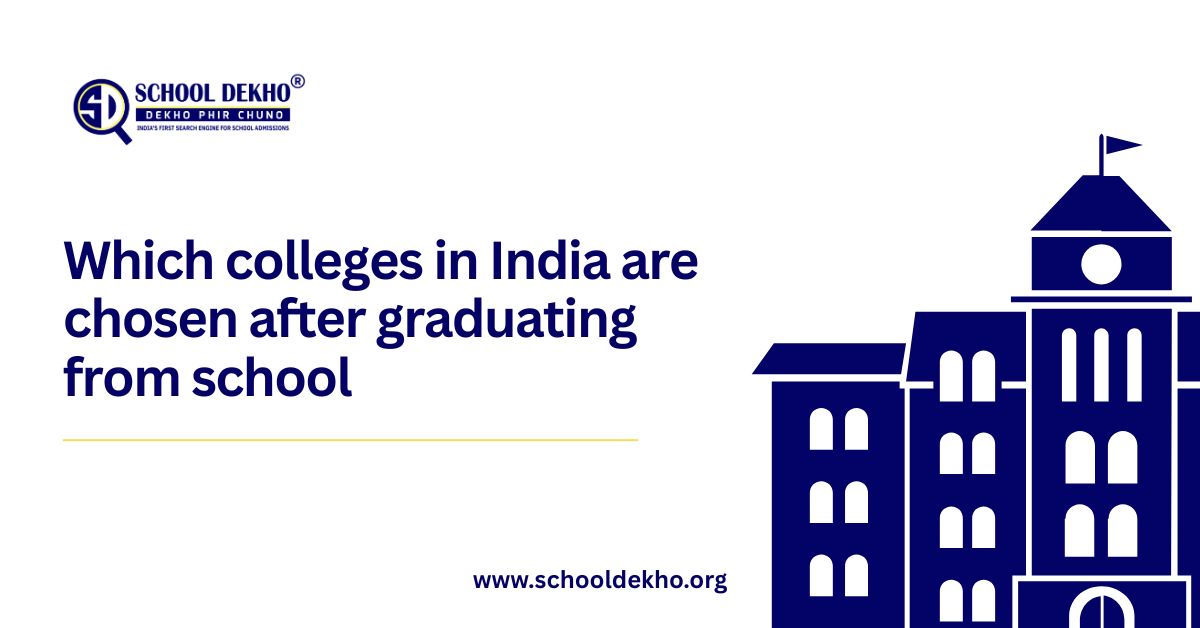Curious about what PGT means? It’s a term you’ll hear a lot in schools, especially in India. This guide, brought to you by School Dekho, breaks down PGT in easy words. We’ll focus on its main meaning in teaching but also touch on other uses. You’ll learn how to become a PGT, what they do, and why it’s a great career. Plus, we’ll share tips to get started. Ready to explore? Let’s jump in!
What Does PGT Mean?
PGT stands for Post Graduate Teacher. In Indian schools, PGTs teach older students in Classes 11 and 12. They’re experts in subjects like Math, Science, or History. Their job is to make tough topics clear and help students ace board exams or tests like JEE and NEET.
PGT isn’t just for teaching, though. In medicine, it means Preimplantation Genetic Testing, a process used in IVF to check embryos for health issues. In rare cases, PGT can refer to things like Power Generating Turbine in energy or Palakkad Junction in railways. But for most people, especially students and job seekers, PGT is all about teaching.
This guide focuses on the teaching role. We’ll explain qualifications, duties, pay, and more. You’ll also see how PGT compares to other teaching jobs.
Why PGT Matters in Education
PGTs are key in high schools. They teach advanced subjects to teens preparing for college or careers. Their work shapes futures by building skills and confidence. Here’s why they’re important:
Deep Knowledge: PGTs dive into complex topics, like calculus or literature, to prepare students for big exams.
Exam Prep: They guide students for boards, JEE, NEET, or CLAT, boosting success rates.
Mentorship: PGTs help students pick streams (science, commerce) and plan their paths.
Career Boost: Being a PGT opens doors to senior roles like principal or curriculum designer.
In short, PGTs are the backbone of senior secondary education. They make learning exciting and meaningful.
Qualifications to Become a PGT
Becoming a PGT takes effort, but it’s worth it. You need the right education and skills. Here’s what you need:
Bachelor’s Degree: Start with a degree in any subject, like BA for English or BSc for Chemistry.
Master’s Degree: Get a postgraduate degree (MA, MSc, MCom) in the subject you want to teach. Aim for at least 50% marks.
B.Ed Degree: This teaches you how to plan lessons and manage classrooms. It’s a must for most schools.
Entrance Exams: Pass the CTET Paper 2 (Central Teacher Eligibility Test) or state-level TETs. The CTET December 2025 notification is expected soon—apply online at ctet.nic.in once released. The exam is tentatively in December 2025.
Focus on the syllabus: Child Development (30 questions), Language I/II (60 questions), and subject-specific sections.
Skills: Know English and Hindi well. Basic computer skills help too.
Age: Be at least 18. Many jobs have no upper age limit, but always check.
Some schools ask for extra certifications or teaching experience. Volunteering or tutoring can strengthen your resume.
What Does a PGT Do?
PGTs have a big role in schools. They don’t just teach—they inspire. Here’s what they do every day:
Teach Tough Subjects: Explain concepts like physics formulas or economic theories in simple ways.
Plan Lessons: Create fun, clear lesson plans with activities or experiments.
Check Progress: Grade tests, homework, and projects. Give tips to improve.
Guide Careers: Help students choose colleges or prep for entrance exams.
Run Activities: Lead clubs, debates, or science fairs to spark interest.
Talk to Parents: Share updates on student growth or challenges.
Keep Learning: Join workshops to stay updated on teaching trends.
PGTs make classrooms lively. They turn hard topics into exciting lessons. For example, a PGT in Biology might run a lab session on cells, helping students see real science.
Meet Ravi, a PGT from Delhi. He helped 80% of his class clear NEET by using simple models and group studies. His tip: "Make lessons real—students learn better with hands-on work."
PGT Teacher Salary and Benefits
PGTs earn well, especially with experience. Pay depends on the school and city. Here’s a quick look, updated for 2025:
Private Schools: Start at ₹30,000 to ₹60,000 per month. Senior roles can hit ₹80,000
Government Schools: Base pay is ₹47,600 (Level 8, 7th Pay Commission). Add allowances like:
DA (Dearness Allowance): Expected 3% hike to 58% before Diwali 2025, boosting in-hand pay.
HRA (House Rent Allowance): 8-24%, higher in big cities.
Total In-Hand: ₹48,000 to ₹70,000 monthly (per 7th Pay Commission updates).
Benefits: Health insurance, paid holidays, and pensions (govt jobs). Annual raises of 3-5% are common.
Growth: Experienced PGTs can earn over ₹1 lakh in top schools. Location matters. Big cities like Delhi pay more due to high living costs.
Teaching offers stability. Summers off and respect make it rewarding. In 2025, govt vacancies are rising, so now’s a good time to apply.
PGT vs. TGT vs. PRT: A Clear Comparison
PGT, TGT, and PRT are teaching roles in India. They differ in classes taught and qualifications. Here’s a simple table:
| PGT (Post Graduate Teacher) | TGT (Trained Graduate Teacher) | PRT (Primary Teacher) |
| 11-12 (Higher Secondary) | 6-10 (Secondary) | 1-5 (Primary) |
Qualifications | Master’s + B.Ed | Bachelor’s + B.Ed | Bachelor’s + D.El.Ed/B.Ed |
Exams | CTET Paper 2/STET | CTET Paper 2/STET | CTET Paper 1/STET |
Main Role | Advanced subjects, exam prep | Core subjects, skill-building | Basic skills, fun learning |
| ₹47,600-₹1,51,100 | ₹44,900-₹1,42,400 | ₹35,400-₹1,12,400 |
| ₹30,000-₹60,000 | ₹25,000-₹40,000 | ₹15,000-₹30,000 |
Career Growth | High (e.g., principal) | Medium (e.g., to PGT) | Low (e.g., to TGT) |
Key Differences:
PGT: Needs a master’s degree. Teaches seniors for college or exams.
TGT: Needs a bachelor’s degree. Focuses on middle school basics.
PRT: Teaches young kids with simpler qualifications.
Choose PGT if you love deep subjects. Pick PRT for young learners or TGT for teens.
Other Meanings of PGT
PGT has different meanings outside teaching. Here are a few:
Preimplantation Genetic Testing (Medical): Tests embryos in IVF for genetic issues, like cystic fibrosis. It helps parents have healthy babies but costs ₹2-5 lakh and raises ethical questions.
Power Generating Turbine (Energy): Used in power plants to make electricity. Rare in everyday use.
Postgraduate Training (Medical): Extra training for doctors after MBBS, like specializing in surgery.
Palakkad Junction (Railways): A station code in Kerala, not a full form.
For most searches, PGT means Post Graduate Teacher. Always check the context.
How to Start Your PGT Journey
Dreaming of being a PGT? It’s a rewarding path. Follow these steps:
Get Educated: Finish a bachelor’s degree in a subject you love. Then, pursue a master’s degree with good grades.
Complete B.Ed: Join a B.Ed program to learn teaching skills. It takes 1-2 years.
Pass CTET: Study for CTET Paper 2. Use past papers or join coaching. School Dekho offers great prep resources!
Gain Experience: Tutor or volunteer in schools. It builds your skills and resume.
Apply for Jobs: Check government sites (like KVS or state boards) for PGT openings. Prepare for interviews with confidence.
Keep Growing: Attend workshops. Join teacher groups. Stay updated on new teaching methods.
Start small but dream big. Every step gets you closer to inspiring students.
Quick Quiz: Which Teaching Role Fits You?
Do you love advanced science? PGT is for you!
Enjoy middle school basics? Try TGT.
Passionate about young kids? Go for PRT.
Prefer exam prep? PGT!
Like building foundations? PRT!
Frequently Asked Questions (FAQs)
1) What is the full form of PGT in education?
PGT means Post Graduate Teacher. They teach Classes 11 and 12.
2) Do I need a B.Ed to be a PGT?
Yes, a B.Ed is required along with a master’s degree.
3) What exams do PGTs take?
CTET Paper 2 or state TETs. Some schools have their own tests.
4) How much does a PGT earn in India?
₹30,000-₹60,000 in private schools; ₹47,600-₹70,000 in government schools with allowances.
5) Can a TGT become a PGT?
Yes, by earning a master’s degree and passing required exams.
6) What subjects do PGTs teach?
Math, Physics, English, History, Economics, and more, based on their master’s.
7) Is PGT better than TGT or PRT?
PGTs earn more and teach higher classes, but all roles matter.
8) What does PGT mean in medical terms?
Preimplantation Genetic Testing, used in IVF to check embryos.
9) How to prepare for CTET 2025?
Study the syllabus, practice mock tests, and use School Dekho’s coaching tools.
10) What is the age limit for PGT jobs?
Usually 18 and up. Many jobs have no upper limit—check postings.
11) What skills make a great PGT?
Clear communication, patience, and subject expertise. Love for teaching helps!
12) Can PGTs work in colleges?
Yes, with further qualifications like a PhD, they can teach at higher levels.
13) What is PGT salary in 2025?
Same as above, with DA expected at 58% after a 3% hike before Diwali 2025, boosting govt in-hand pay to ₹60K+.
14) How to apply for KVS PGT jobs?
Visit kvsangathan.nic.in, fill the form, and submit fees online.
15) What is PGT full form in Hindi?
पोस्ट ग्रेजुएट शिक्षक (Post Graduate Shikshak).
16) How to apply for KVS PGT jobs?
Visit kvsangathan.nic.in, fill the form, and submit fees online.
17) What are common PGT subjects?
Science (Physics, Chemistry), Math, English, Social Studies—based on demand.
18) Can freshers become PGTs?
Yes, with qualifications and CTET, but experience helps in interviews.
Final Thoughts
PGT stands for Post Graduate Teacher, a role that changes lives. From teaching complex subjects to guiding teens toward bright futures, PGTs make a difference. With a master’s degree, B.Ed, and passion, you can join their ranks. The journey is worth it—great pay, stable benefits, and the joy of shaping minds await.
At School Dekho, we believe you can achieve your teaching dreams. Don’t wait! Start your education, prep for CTET, and inspire the next generation.




